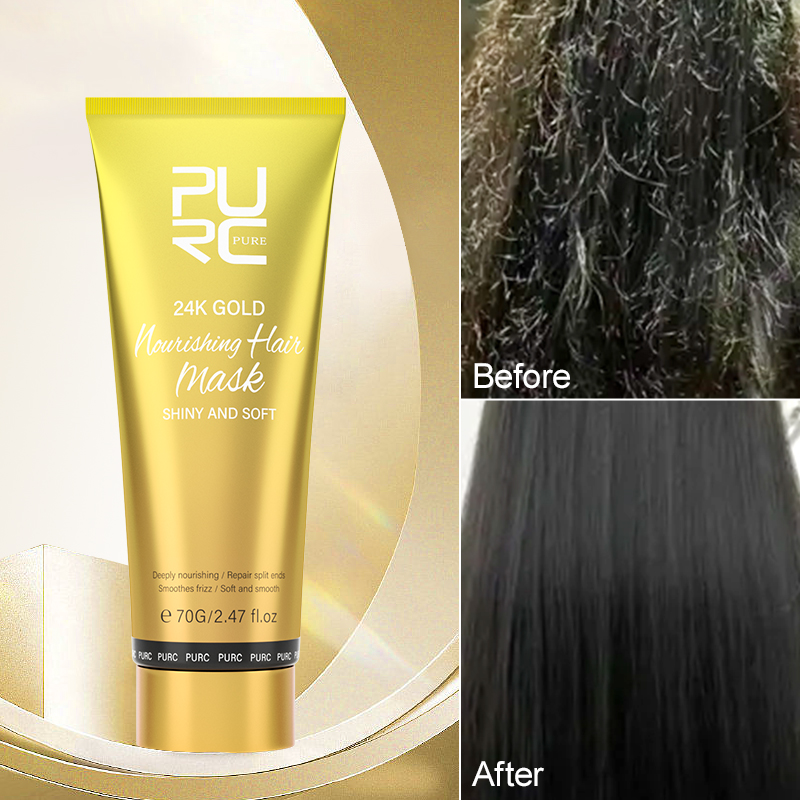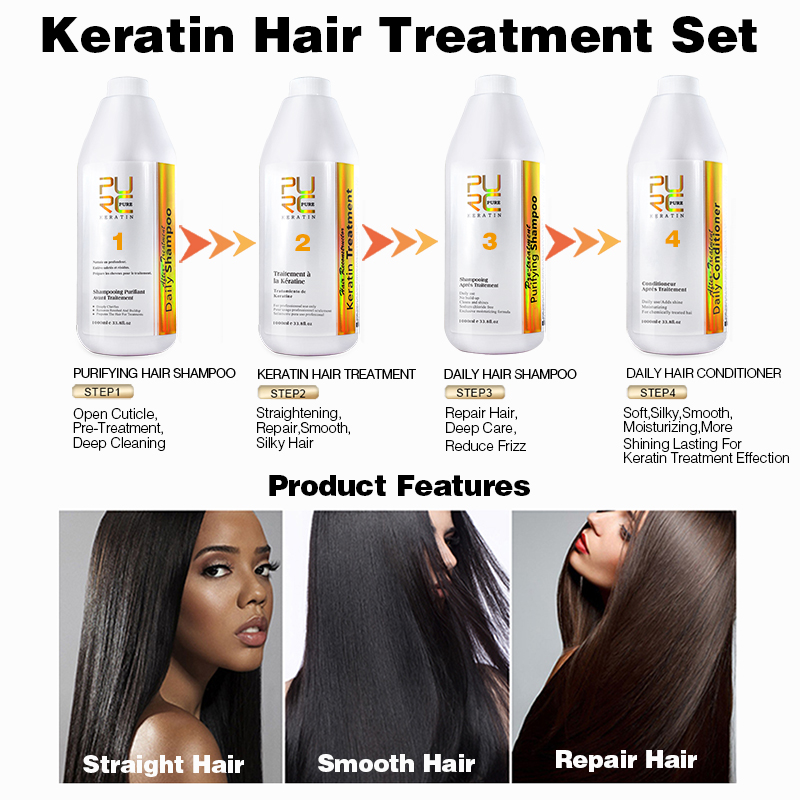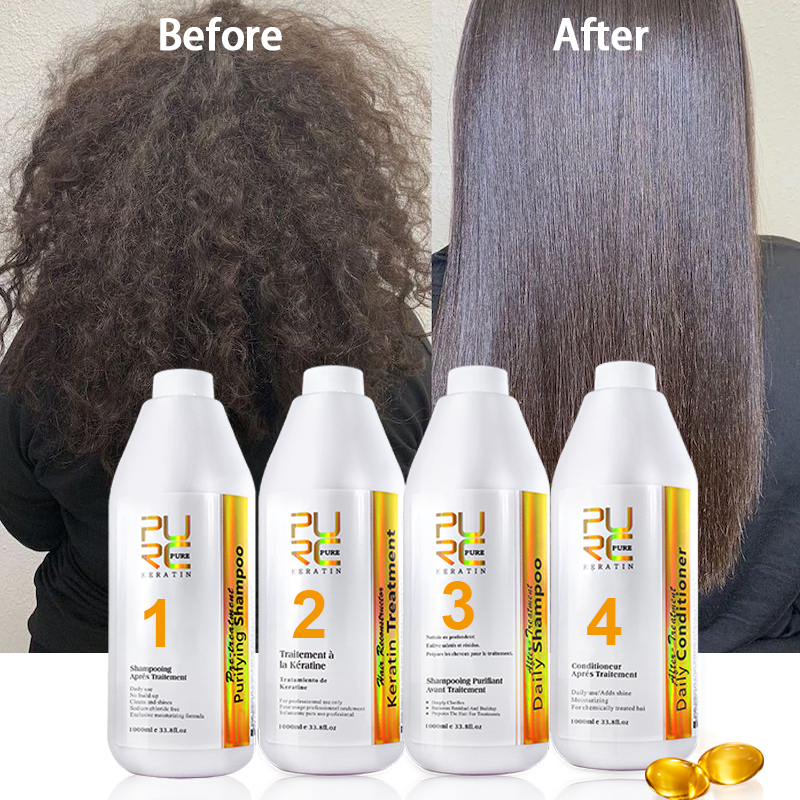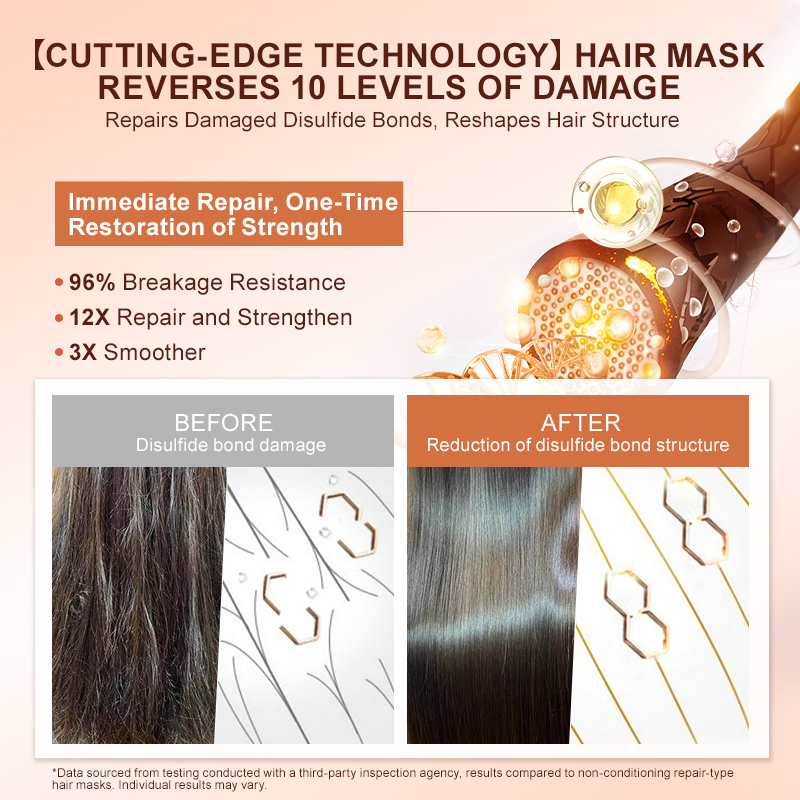Discover the transformative benefits of keratin treatments with the Lavender Brazilian Blowout. Smooth, straighten, and protect your hair while reducing styling time. Visit Bonnie Co. Beauty to explore our keratin hair treatment and contact us for personalized assistance. Transform your hair today!
Introduction
Have you ever wondered what really happens when you get a keratin treatment? Beyond the smooth, frizz-free hair lies a fascinating science that transforms your hair’s very structure. Keratin treatments are not just about aesthetics; they involve a detailed molecular process that changes how your hair behaves. Let’s dive deep into how keratin treatments work their magic on a molecular level.

Understanding Hair Structure
Your hair is more than just strands; it’s a complex structure primarily composed of keratin, a type of protein. Each strand of hair is built from a medley of proteins, lipids, and other elements, but keratin is the star of the show, providing strength and resilience. Hair’s structure is made up of three main layers: the cuticle, the cortex, and the medulla. The cuticle is the outermost layer, protecting the inner layers and giving hair its shine. The cortex contains the keratin proteins and is responsible for hair’s strength, color, and texture. The medulla, found in thicker hair strands, is the innermost layer.
Keratin proteins in the cortex are arranged in bundles held together by disulfide bonds, hydrogen bonds, and salt bonds. These bonds determine the hair’s shape and texture, influencing whether it is straight, wavy, or curly. Disulfide bonds, the strongest of these, are particularly crucial as they confer the most strength and stability to the hair structure.
What are Keratin Treatments?
Keratin treatments are salon procedures that infuse hair with additional keratin, aiming to smoothen and straighten it. These treatments are popular for their ability to reduce frizz and enhance shine, offering a sleek, polished look. The keratin solution used in these treatments often contains formaldehyde or similar ingredients to aid in the restructuring process. When applied, the solution helps to fill in gaps in the hair’s cuticle, making the hair appear smoother and more lustrous.
The treatments vary in intensity and longevity. Some offer temporary effects that last a few weeks, while others can last up to several months. The choice of treatment depends on the desired result and the current condition of the hair.

The Science Behind Keratin Treatments
At the heart of keratin treatments is a transformative chemical process. The treatment works by breaking down the hair’s natural keratin bonds and reconfiguring them, leading to straighter, smoother hair. This process primarily affects the disulfide bonds in your hair. These bonds are broken and then reformed through the application of heat, which locks in the new shape. This alteration can last for several months, depending on hair type and care routine.
The keratin solution, when applied to the hair, penetrates the hair shaft and modifies its protein structure. Heat is then used to seal the hair cuticle and trap the keratin molecules inside. This process helps in smoothing out the hair’s surface and realigning the disulfide bonds into a straighter configuration. The result is hair that is not only straighter but also stronger and more resilient to damage.
How Disulfide Bonds Affect Hair
Disulfide bonds are the key to understanding hair texture. These strong chemical bonds link the keratin proteins within hair strands, influencing whether your hair is curly, wavy, or straight. Altering these bonds can dramatically change hair’s texture and appearance. Curly hair has numerous disulfide bonds, creating kinks and curls. When these bonds are broken and reformed in a straight alignment, the hair becomes straighter and smoother.

Disulfide bonds are resistant to most environmental changes but can be altered through chemical processes like perming, relaxing, or keratin treatments. When a keratin treatment breaks these bonds and resets them in a new configuration, the hair’s texture changes accordingly. This is why the effects of keratin treatments can be long-lasting but not permanent, as new hair growth will retain its natural structure.
Process of a Keratin Treatment
A typical keratin treatment involves several steps: cleaning the hair thoroughly, applying the keratin solution, allowing it to penetrate the hair, and then sealing it with heat. This process can take several hours but results in significant changes to the hair’s structure. Here’s a step-by-step breakdown:
Cleansing: Hair is washed with a clarifying shampoo to remove any residues.
Application: The keratin solution is applied to damp hair, section by section.
Processing: The solution is left on the hair for a specified period, allowing it to penetrate.
Sealing: Hair is blow-dried and flat-ironed to seal in the treatment, reconfiguring the disulfide bonds.
The flat ironing step is critical as it uses high heat to activate the treatment and lock the new structure in place. This step can take time, especially for thicker or longer hair, as it requires passing the iron over small sections multiple times to ensure thorough sealing.
Benefits of Keratin Treatments
The benefits of keratin treatments are manifold. Primarily, they transform unruly, frizzy hair into smooth, manageable locks. This results in reduced drying time and enhanced shine, making hair look healthier and more polished. One of the most significant advantages is the treatment’s ability to protect hair from environmental damage. Keratin treatments create a protective layer around each hair strand, reducing the effects of humidity and pollution, which is particularly beneficial in harsh weather conditions.
For individuals with particularly curly or wavy hair, keratin treatments can simplify daily styling routines. The treatment restructures hair at a molecular level, making it straighter and easier to manage. This leads to a considerable reduction in styling time, as post-treatment hair requires less effort for blow-drying and straightening. Such efficiency is a substantial benefit for those with busy lifestyles who need to save time on their hair care routine.

Additionally, the smoothness and shine imparted by keratin treatments can significantly boost one’s confidence. Hair appears more vibrant and healthy, which can enhance overall appearance and self-esteem. The ease of styling and the lasting effects of the treatment make it a worthwhile investment for many seeking to improve the look and feel of their hair.
Potential Risks and Considerations
While keratin treatments offer many benefits, they come with potential risks. The presence of formaldehyde in some treatments can cause health concerns, including eye irritation, respiratory issues, and skin sensitivity. Overuse of keratin treatments can lead to hair damage, making it dry and brittle over time. It’s crucial to understand these risks and choose a reputable salon. Opting for formaldehyde-free treatments and ensuring proper ventilation during the procedure can mitigate some of these risks. Always consult with a hair professional to determine the best course of action for your specific hair type and condition.
Some people may also experience an initial period of dryness or breakage after the treatment, especially if their hair is already damaged or over-processed. It’s essential to follow post-treatment care instructions carefully, including using sulfate-free shampoos and conditioners to prolong the effects of the treatment and maintain hair health.
Maintenance and Aftercare
Maintaining the results of a keratin treatment involves specific aftercare steps to ensure the longevity of the treatment. Here are some tips for post-treatment care:
Avoid Washing: After the treatment, it’s usually recommended not to wash your hair for at least 72 hours. This allows the keratin to fully bond with your hair.
Sulfate-Free Products: Use sulfate-free shampoos and conditioners to prevent stripping the keratin from your hair.
Minimize Heat Styling: While keratin treatments reduce the need for heat styling, if you do use heat tools, ensure they are set to a lower temperature to avoid damage.
Regular Touch-Ups: Depending on your hair growth and texture, you may need touch-up treatments every few months to maintain the smooth, straight look.

Alternatives to Traditional Keratin Treatments
For those wary of the potential risks associated with traditional keratin treatments, there are alternative options available. These include formaldehyde-free keratin treatments, cysteine treatments, and amino acid-based smoothing treatments. Each alternative has its pros and cons, but they generally aim to provide similar benefits without the associated risks of formaldehyde exposure.
Conclusion
In conclusion, keratin treatments are a remarkable way to transform your hair, offering sleek, shiny results. By understanding the science behind these treatments, you can make informed decisions and enjoy the benefits of smoother, healthier hair. Whether you’re battling frizz or simply looking for a way to streamline your hair care routine, keratin treatments provide a solution grounded in the fascinating science of hair structure. So next time you sit in the salon chair, you’ll know exactly what’s happening as your hair undergoes its transformation.
By considering the benefits and potential risks, and following proper aftercare, you can achieve the best possible results from your keratin treatment. Embrace the science, enjoy the smoothness, and let your hair shine with newfound health and beauty.
Ready to transform your hair with the power of keratin? Discover the Lavender Brazilian Blowout Keratin Hair Treatment for smooth, straight hair! Visit BonnieCo Beauty to get yours today. Have questions? Contact for more information and personalized assistance. Embrace the beauty of sleek, manageable hair now!



